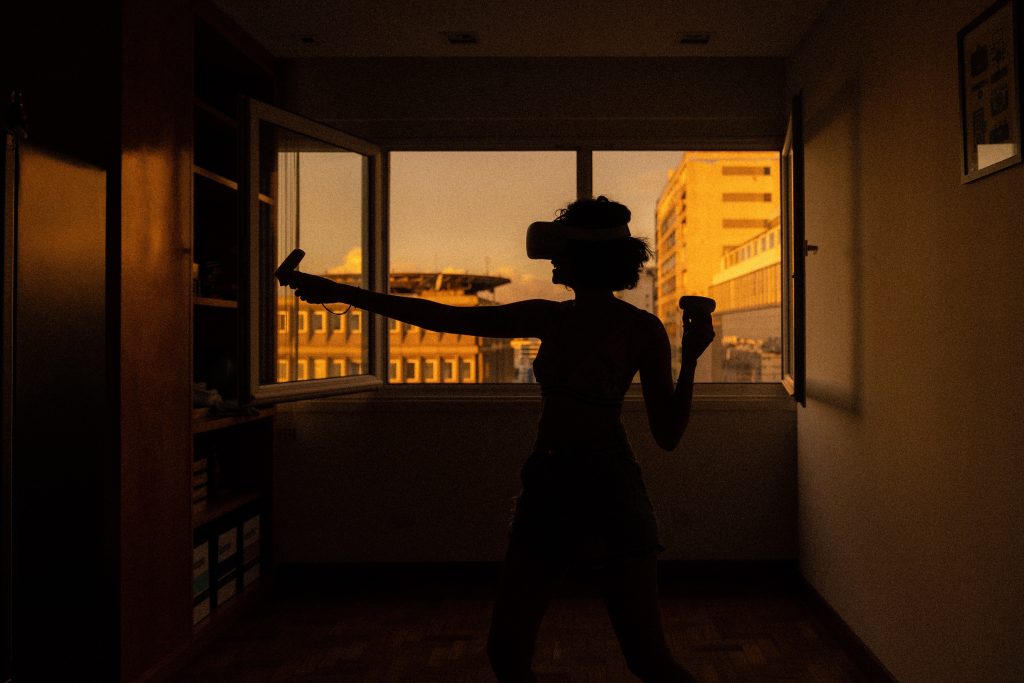At PotentialSquared we consider ourselves informed and curious. We have a passion for creating immersive playgrounds for leaders to develop and thrive in the challenging world. We have a well-established history of using actors, case studies, and interactive forum theatre to create a deep learning experience for leaders, in a short space of time. We realize that the fastest and most effective way to learn is by “doing”, but leaders don’t always get the opportunity to learn on the job. It takes time for them to gain the knowledge and leadership experience to get it right. This is where, now and in the future, virtual reality for leadership development can help.
Until recently, the use of VR for any kind of soft skills development was underwhelming at best; graphics weren’t up to expectations, the interactive elements were unconvincing, participants were getting woozy inside their head gear and the cost of the technology required was prohibitive.
Fortunately, a rapid increase in demand has resulted in significant investment in VR technology and these issues are no longer a blocker for L&D. Walmart, BMW, Verizon, and many other Fortune 500 companies are already using VR to develop human skills and they’re getting the results to back up the investment.
Virtual reality leadership training is an immersive experience and in the case of multi-player VR training, leaders are immersed in a virtual world where they are expected to collaborate and successfully complete a series of tasks. An effective VR experience lasts 5 to 15 minutes and enables facilitators to test and observe a range of soft skills, including empathy, communication, collaboration, innovation, continuous improvement, agility, and much more.
Virtual reality works by engaging the senses (sight, touch, hearing), which in turn sends signals to the brain to help interpret and understand the “world” they’re in. With a VR headset on, your brain is tricked into believing you are in a very real environment using a stereoscopic display, which gives the impression of real-world depth.
He’s our CEO, Colin Hunter talking about why he finds VR learning so exciting.
Ryan Heinl, director of product management and leader of DDI’s Innovation Lab says,
“Virtual reality has the power to help leaders experience and manage emotional leadership situations in a way that no other tool or learning technique can. Whether the goal is to help leaders gain empathy for what others are feeling or to give them a safe space to practice emotionally charged conversations, VR changes the learning experience in a way we’ve never seen before in the industry. It’s a game-changer.”
Jeremy Bailenson, professor of communication at Stanford University and founding director of the Virtual Human Interaction Lab, takes up the story: “VR allows you to do what’s called body transfer. It’s a neuroscience principle involving seeing your own body movements on an avatar and, by doing these movements and seeing them on a different body, the part of the brain that gets activated when you think of yourself, it expands to include that avatar as well. You can actually have someone walk a mile in someone else’s shoes this way.”
PotentialSquared, as mentioned uses real-life actors to create an immersive training experience – but is developing VR training alongside more traditional face-to-face and virtual activity.
“Once participants are in a headset and working in the VR world, they can become so immersed that they truly are themselves. They can’t help but be themselves,” says Colin Hunter, CEO of PotentialSquared.
Colin continues, “With VR we are asking people to immerse themselves in the experience. And it is then their natural behaviors come out. You can cut off from thinking too much about what others expect of you. That allows you to present behaviors that are natural. From that baseline, you can try out new approaches that you may want to develop, all happening in a safe space. We are delighted to offer our new experiential VR series of products.”
Adopting VR may bring your organization short- and long-term economic benefits. In a recent PwC study, employees who had taken VR training said they felt 40% more confident to act on their training than classroom learners and 35% more confident than e-learners. These VR trainees also felt four times more focused than e-learners—and completed their programs 1.5 times faster.
VR training achieves cost parity with classroom learning at 375 users and with e-learning at 1,950 users, PwC found.
For Hilton hotels, VR has proven to be both efficient – cutting a four-hour class session to 20 minutes – and effective, leading 87% of trainees to change their behaviors. At Purina PetCare, shifting 10 employees a month to VR training saved $100,000 annually on travel and lost productivity.
And while VR is highly effective in providing immersive experiences to train employees for physical work on location, it’s also become an essential tool for high-pressure human interactions — practice for onstage presentations and role-playing for appraisals, interviews, and difficult conversations — that may now be costing your organization far more to recreate than they otherwise might.


